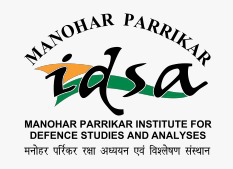The Philippines’ Horizon 3 Military Modernisation Programme
The Philippines has set aside US$ 35 billion for the ‘Re-Horizon 3’ military modernisation initiative.
The Philippines has set aside US$ 35 billion for the ‘Re-Horizon 3’ military modernisation initiative.
This monograph explores the varying approaches of the United States, China, Russia, the United Kingdom, and Israel towards military engagements in cyberspace, detailing their initial strategies, underlying expectations, and the resultant outcomes. By examining these diverse national strategies, the study provides insightful analysis into the evolving perspectives and practices regarding military involvement in cyberspace across different states.
It would not be a cliche to describe the strategic contours of Asia as being at the crossroads of history. A number of significant events are influencing the likely course that the collective destiny of the region could possibly take in the future. Some of the key issues and trends have been analysed in this year’s Asian Strategic Review
The Year Book seeks to promote a better understanding of contemporary issues affecting China and their impact on India. This first edition of an annual series of year books is a compilation of incisive chapters focussing on China’s relations with the US, South Asia, ASEAN, Japan and East Asia, Central and West Asia, and the SCO. India-China relations—of considerable interest and significance to India—are discussed as are the Chinese economy, media, the People’s Liberation Army, and the political landscape inside the country.
The military applications of Virtual Reality include those relating to combat training and simulation.
The suggestions being offered to rein in the advancements in AI need to move into the domain of regulation, to ensure that the unwarranted effects of these technologies do not spill over onto the modern battlefield.
NATO countries are adopting Emerging and Disruptive Technologies (EDTs) to maintain their strategic advantage and to mitigate transnational threats.
In the current geopolitical situation, India needs to increase the indigenous defence production and build a strong military force armed with technologically advanced defence equipment to create a robust security framework that meets the requisites of modern warfare.
Understanding the Chinese Revolution in Military Affairs (RMA) has been a challenge for military thinkers and planners due to opacity and secrecy within the People’s Liberation Army (PLA). This article delves into the traditional relationship between the erstwhile Soviet (now Russian) and Chinese militaries and draw parallels between the two RMA. It argues that in many ways the Chinese RMA has followed the Russian RMA, which was driven by the latter’s experiences in modern wars in Georgia, Ukraine, Crimea, and Syria. The article concludes that the PLA has suitably modified the Russian military doctrines, reorganisation and restructuring as well as the induction of military equipment to suit the threats and challenges that confront it. Military thinkers and planners would do well to study the Russian RMA to extrapolate the future trajectory of the changes that are underway in the PLA.



